Go with the Ridgid ThruCool Worm Drive or stick with a sidewinder?
It’s been hard to miss the lively discussion here and elsewhere about sidewinders versus worm drive circular saws. Traditionally, sidewinders with their blade-right orientation have been more popular in the Eastern U.S. and worm drives with their blade-left orientation have been more widely used in the West. But it’s more than which side the blade is on. There’s torque and weight to talk about as well as some maintenance.
But which design is best? Well, that depends on who you talk to. Most contractors probably have at least one of each for different applications. I don’t suppose we’ll settle anything with this review of the Ridgid ThruCool Worm Drive and frankly, there’s really nothing to settle. It’s a matter of familiarity, preference, and task. But there are tasks that we reach for a worm drive first on.
First Impressions
Those familiar only with sidewinders (also known as a direct drive) will probably notice the weight of the Ridgid ThruCool Worm Drive first. It’s heavy, but not only is that a characteristic of all worm drives, it’s actually not a bad thing, believe it or not.
The longer, narrower worm drive has a motor position behind the blade instead of beside it like a sidewinder. Ridgid includes a powerful 15-amp motor, on par with the high end of circular saw power and what Pros look for. Another distinction of worm drives is lower RPMs but much higher torque even though both styles pack a 15-amp motor at this level.
The saw features 0° to 56° bevel capability with positive stop detents at common angles, a cast aluminum base, a handy rafter hook, an onboard allen wrench for blade changes (note the reverse thread!) and Ridgid’s Hex Grip overmold on the handle.
You’ll see an oil sight since this type of saw requires lubrication – a maintenance item unnecessary on the saw’s sidewinding brethren. And since powerful motors do lots of work and get hot, Ridgid’s ThruCool technology is designed to allow air to flow through the center of the motor and out the sides to stay cool.
Stay ThruCool This Summer
Many tradesmen will say the distinct advantage of a worm drive saw is the combination of superior torque for rip cuts and the blade-left cut line visibility for right-handed users (which most people are). But as I mentioned, there are some fine blade-left sidewinders in production, so does that diminish the need for worm drives?
Not really. Keep in mind that you might opt one saw over another depending on the application. For instance, the Ridgid ThruCool Worm Drive is so muscular that I think it heard it laugh after I cut a bunch of 2x4s while we were framing out some new construction. But it’s really an overkill of torque for that task, and the need for a cord and the saw’s weight don’t make it the best choice for basic framing. It’s hard to beat our cordless sidewinder for that work.
In contrast, when we have long rip or cross cuts, or thicker or harder lumber, the Ridgid blasts through with ease where our typical saw will struggle. It gives you a great sense of power and control with its smooth cutting action. Some of that is undoubtedly due to the weight. While you might think it’s a disadvantage, the weight helps you keep a fine line. Plunge cuts are likewise a breeze. And you right-handers get a clear view of the cut line.
The Ridgid ThruCool Worm Drive seems particularly well-suited for deck-building with its long cuts in pressure treated lumber. Lay out the deck and pop the line – the saw won’t break a sweat, even if the lumber is wet. And if you need to adjust the depth or make a bevel cut, the adjustments are very simple and smooth. Even if you don’t normally use a worm drive, a tool like this can make your job a lot easier when used for the right purposes!
About that Weight
So generally how much heavier and more powerful is the Ridgid than a typical corded sidewinder?
Ridgid tips the scales at a little over 15 pounds whereas its sidewinder counterparts will come in between 8 and 9 pounds. Battery-powered circular saws fall somewhere in 10-pound range thanks to battery weight. But even within the worm drive category, some saws can push under 13 pounds with magnesium construction.
Pro Tip
A worm drive’s weight can be an advantage since it helps keep the powerful saw down on your material so you can focus your effort on moving the saw forward on a straight path.
The Bottom Line
The Ridgid ThruCool Worm Drive is a powerful beast of a circular saw. It can certainly be your primary saw since it’s much more powerful than any sidewinder and can handle anything you throw at it. Even though it doesn’t have the advantage of weight-saving magnesium, it does feature a ThruCool motor design to potentially extend the life of the tool.
Does it work?
There’s certainly the performance we expect to find in a worm drive, but it will take more time to see if the motor holds up. Regardless, Ridgid backs it up with their Lifetime Service Agreement, so they’re taking the risk – as long as you register it.
The choice between a sidewinder and a worm drive is really a simple one. Both saws have their advantages. You can certainly use them interchangeably the vast majority of the time but just grab (at least) one of each and the problem is solved. Your work life will be much better for it. At a reasonable $169, Ridgid’s ThruCool is coming with me to every job now – even framing jobs – just in case!
Related Content
-
Sidewinder Vs Worm Drive
-
Blade-Left Vs Blade-Right
-
Cordless Circular Saw Shootout
-
Making Accurate Circular Saw Cuts
Ridgid ThruCool Worm Drive Circular Saw Features
- 15 Amp motor delivers full power in a lighter, more compact size
- Visible oil sight to quickly check oil for easy maintenance
- 0° to 56° bevel detent system positive stops at common cut angles for quick adjustments
- Sky hook integrated rafter hook for easy storage
- Cast aluminum base engineered for improved durability on the jobsite
- Protected cord relief durable cover extends cord life
Ridgid ThruCool Worm Drive Circular Saw Specifications
- Model Number: R32104
- Depth: 20.94 inches
- Height: 8.50 inches
- Width: 8.31 inches
- Blade Diameter: 7-1/4 inches
- Max cut depth @ 90 degrees: 2.375 inches
- Amperage: 15 amps
- Bevel Capacity: 56-degrees
- Blade Location: Left
- Cord Length: 6 feet keyed
- Max cut depth at 45 degrees: 1.75 inches
- Max speed: RPM 5,000
- Weight: 15.37 pounds
- Price: TBD

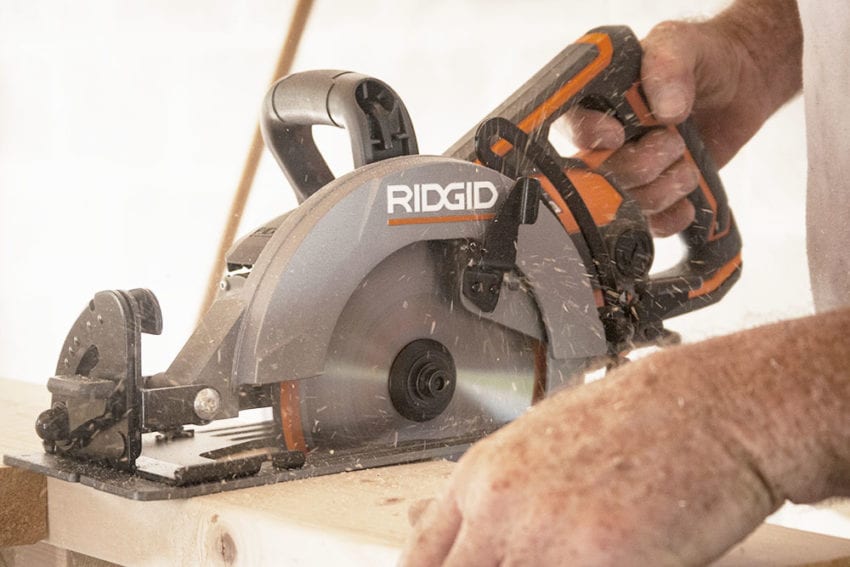
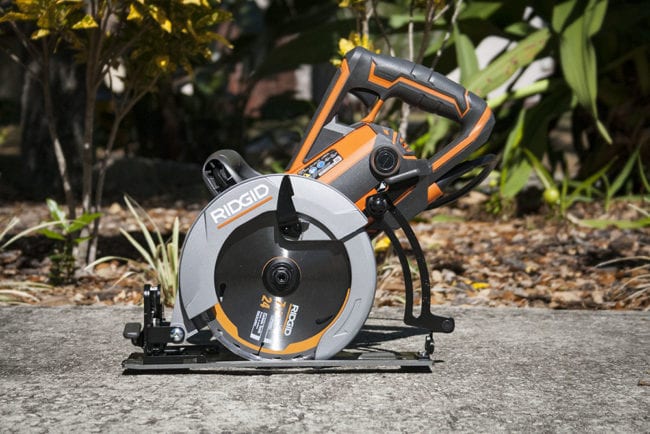
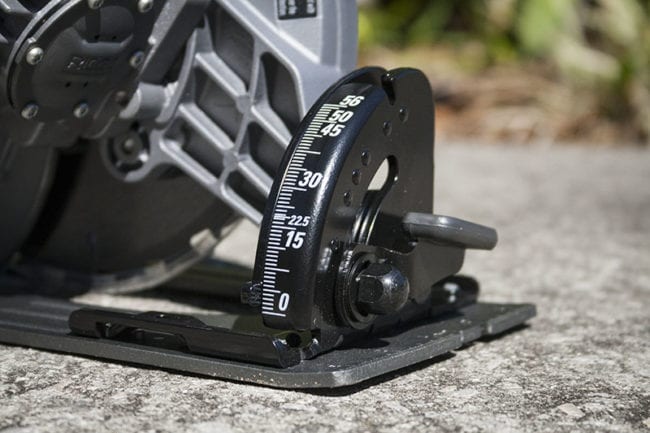
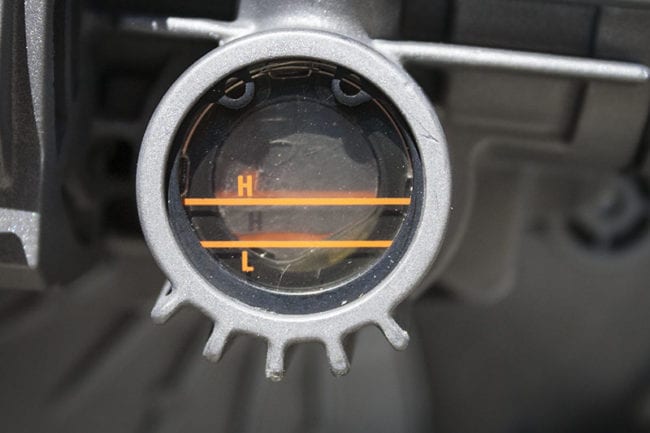
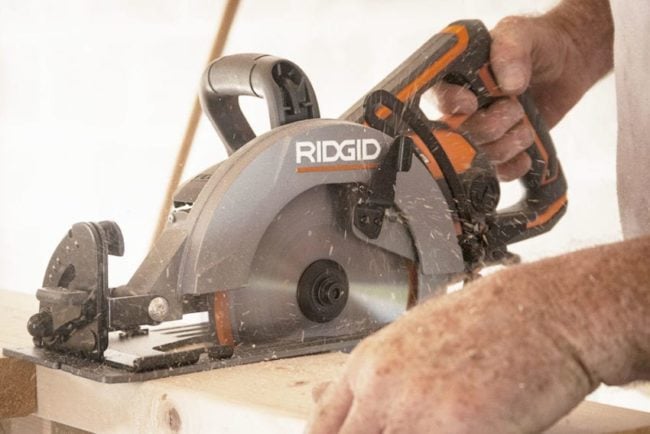
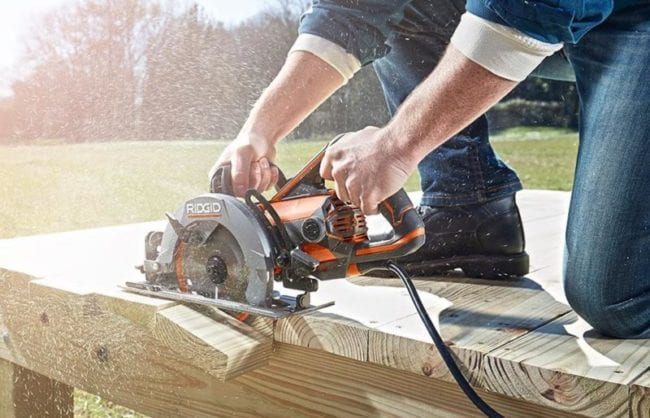
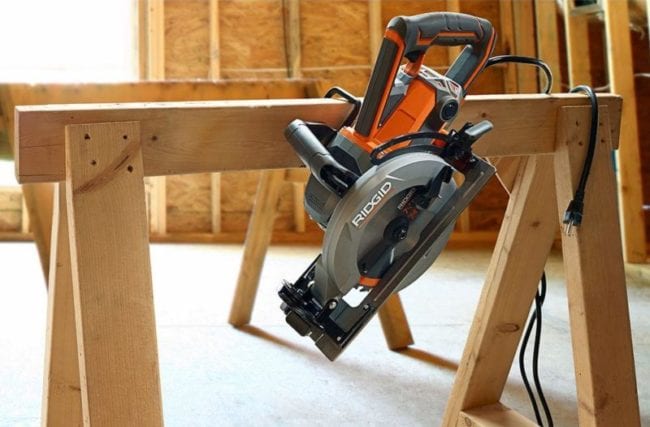
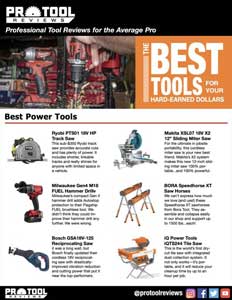


This saw is a true powerhouse. It really came into it’s own with the addition of a 40 tooth diablo blade. Now it literally doesn’t care what it is cutting, the motor rpms stay high and act as if it has no load.I cannot stress enough about 10-12 gauge 25-50ft high quality extension cord. If you meet these requirements, you’ll have a world class experience with this tool. Read your manual, it is your friend. Ebay has the oil. Great tool, great review.
Why does this review compare the saw to sidewinders instead of other worm drives? I’m interested because of the lifetime warranty, but want to know how it stacks up compared to skil, makita, dewalt, etc offerings.
so….no description of the “Thru-Cool” feature…only reason I read the article..
I have this saw and it is everything the reviewer says it is. Replaced an aging B&D which was light and always jumped upon start up. Now if it only had a case.
Thanks for the shoutout!